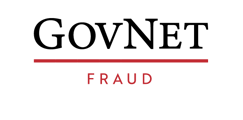In the complex realm of public sector fraud, unravelling the evidence trail is pivotal to successful investigations. This blog post delves into the essential techniques and strategies used to dissect the evidence trail in investigating public sector fraud cases, highlighting the importance of meticulous attention to detail and the role of technology in streamlining the process.
Understanding the Complexity of Public Sector Fraud
Public sector fraud cases often involve intricate schemes and multiple layers of deception. Investigators must navigate through vast amounts of data, documents, and financial records to unearth irregularities and fraudulent activities. Understanding the unique challenges of public sector fraud is crucial to effectively unpick the evidence trail.
Document Analysis and Forensic Accounting
Document analysis and forensic accounting are pivotal in unearthing evidence of fraud in the public sector. Investigators meticulously scrutinise financial statements, invoices, contracts, and other documents to pinpoint discrepancies, inconsistencies, and fraudulent transactions. Forensic accounting techniques, such as fund tracing and financial transaction reconstruction, help construct a clear picture of fraudulent activities.
Digital Forensics and Electronic Evidence
In today's digital age, electronic evidence often forms a cornerstone of fraud investigations in the public sector. Digital forensics specialists analyse electronic devices, networks, and data repositories to unearth evidence of fraudulent activities, such as tampered documents, deleted records, and electronic communications. Advanced forensic tools and techniques enable investigators to extract, analyse, and preserve electronic evidence effectively.
Data Analytics and Pattern Recognition
Data analytics and pattern recognition techniques are invaluable tools for identifying suspicious patterns and trends in extensive datasets. Investigators employ data mining, statistical analysis, and machine learning algorithms to detect anomalies and potential fraud indicators. By scrutinising transactional data, behavioural patterns, and financial trends, investigators can unearth evidence of fraudulent activities concealed within the data.
Collaboration and Information Sharing
Collaboration and information sharing are imperative for successful fraud investigations in the public sector. Investigators collaborate with other agencies, law enforcement authorities, and industry partners to exchange intelligence, resources, and expertise. Information-sharing platforms and databases facilitate the exchange of information, enabling investigators to uncover new leads and connect the dots in complex fraud cases.
Conclusion
Unravelling the evidence trail in investigating public sector fraud cases demands a comprehensive approach, blending traditional investigative techniques with state-of-the-art forensic tools and technology. By harnessing document analysis, forensic accounting, digital forensics, data analytics, and collaboration, investigators can uncover the evidence necessary to prosecute fraudsters and hold them accountable. With scrupulous attention to detail and a dedication to integrity, investigators play a pivotal role in safeguarding public funds and preserving citizens' trust in government institutions.

Nicole Lummis
After a career in Project Management, I realised how important it was for me to pursue a career with a more creative career path. I have a passion for creating engaging digital content whether through written content or the use of image, graphics or videos.




